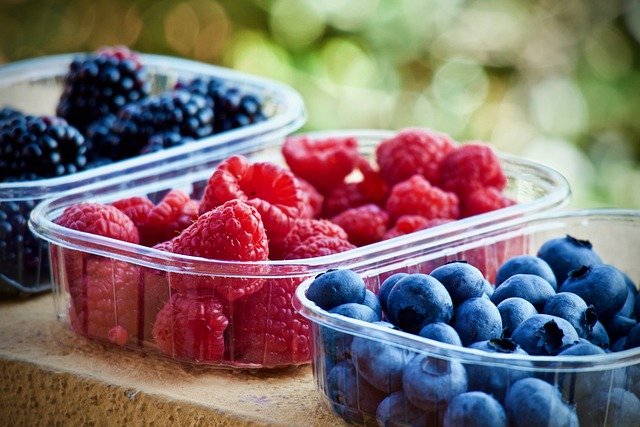
Caring for a loved one while ensuring proper nutrition can feel like piecing together a complex puzzle. Studies reveal that over 60% of caregivers find their own eating habits suffer as they prioritize their loved one’s needs. However, with some planned strategies and the right support, you can maintain healthy eating habits that benefit both you and the person you care for.
The Essence of Clean Eating for All Ages
Clean eating does not revolve around restrictive diets or complicated rules; rather, it emphasizes choosing whole, minimally processed foods that offer maximum nutrition. This approach can enhance energy levels, bolster immune function, and improve overall well-being for both seniors and caregivers.
Nutrition experts from top Philadelphia home care facilities highlight the importance of making clean eating practical and sustainable. This involves balancing optimal nutrition with real-life factors like time constraints, budget, and diverse dietary requirements.
Harnessing the Benefits of Professional Support
Professional caregivers can play a crucial role in upholding good nutrition. They assist with meal planning, grocery shopping, and food preparation, ensuring that both caregivers and their loved ones enjoy nutritious diets. Many home care services now offer specialized nutrition support training, making them valuable partners in dietary improvement.
Effective Meal Planning Strategies
The key to successful meal planning lies not in crafting elaborate menus but in employing smart strategies that conserve time and energy while optimizing nutrition. Here’s a straightforward approach:
Start with a simple weekly template:
- Choose three primary protein sources (like chicken, fish, and beans).
- Select five versatile vegetables.
- Pick two to three whole grain options.
- Have healthy snacks readily accessible.
This framework enables variety by allowing you to mix and match ingredients. Consider batch cooking these staples on a less busy day to streamline meal preparation throughout the week.
Navigating Common Dietary Challenges
Changes in appetite and dietary restrictions can pose challenges to seniors’ nutrition. Here are common solutions:
For decreased appetite:
- Offer smaller, more frequent meals.
- Make every bite count with nutrient-packed foods.
- Schedule meals during peak energy times.
- Serve visually appealing dishes using various colors and textures.
For dietary restrictions:
- Prioritize naturally compliant foods over processed alternatives.
- Enhance flavors using herbs and spices instead of salt.
- Adjust textures while preserving taste.
- Keep a record of successful meals and snacks.
Creating a Kitchen that Supports Healthy Eating
An organized kitchen simplifies healthy eating. Essential tools to have include:
- A sharp set of knives.
- Multiple cutting boards to avoid cross-contamination.
- Storage containers in varying sizes.
- A blender for smoothies and purées.
- Measuring cups and spoons.
Ensure frequently used items are easily accessible, and designate specific areas for different types of food preparation.
Quick and Nutritious Recipe Ideas
Protein-Packed Breakfast Options
- Overnight oats topped with Greek yogurt and berries.
- Vegetable egg muffins (easy to prepare in advance).
- Protein-enriched smoothie bowls topped with nuts.
Simple One-Pan Dinners
- Sheet pan chicken accompanied by roasted vegetables.
- Baked fish served with sweet potatoes and broccoli.
- Vegetarian chili topped with cornbread.
Healthy Snack Ideas
- Sliced apples with almond butter.
- Greek yogurt parfaits.
- Homemade trail mix.
- Vegetable sticks accompanied by hummus.
Smart Shopping Tips
Create a master shopping list organized by store layout to save time and minimize impulse buys. Stock up on:
Pantry Essentials:
- Whole grains (brown rice, quinoa, oats).
- Beans and lentils.
- Nuts and seeds.
- Healthy oils (olive, avocado).
Fresh Produce:
- Long-lasting items (apples, citrus fruits, carrots, cabbage).
- Pre-cut options for hectic days.
- Frozen vegetables as a backup.
Enhancing Meal Appeal
Presentation is key, especially when appetite is lacking. Here are some tips:
- Incorporate colorful vegetables for visual interest.
- Vary the textures in meals.
- Serve food at preferred temperatures.
- Keep portions modest but allow for seconds.
Celebrating Special Occasions Mindfully
Holidays and special occasions don’t have to disrupt healthy eating. Consider these strategies:
- Focus on one special item instead of multiple treats.
- Make healthier versions of cherished dishes.
- Control portions while enjoying traditional foods.
- Plan ahead for holiday meals and festivities.
Monitoring Progress and Adjusting Accordingly
Maintain a simple food diary to note:
- Particularly successful meals.
- Your energy levels throughout the day.
- Any digestive issues or concerns.
- Your overall satisfaction with meals.
Utilize this information to refine your nutrition approach over time.
Looking Ahead
Remember, improving nutrition is a journey rather than a destination. Begin with small, manageable changes and gradually build on them. Emphasize progress instead of perfection, and take the time to celebrate small victories along the way.
Final tips for success:
- Start by improving just one meal.
- Make gradual changes to avoid feeling overwhelmed.
- Keep a list of successful meals and snacks.
- Stay flexible and adjust as your needs change.
With careful planning and the right support, you can establish a sustainable approach to healthy eating that works for you and your loved one. Remember, prioritizing your nutrition is not selfish; it’s essential for providing the best care possible.








